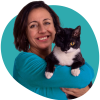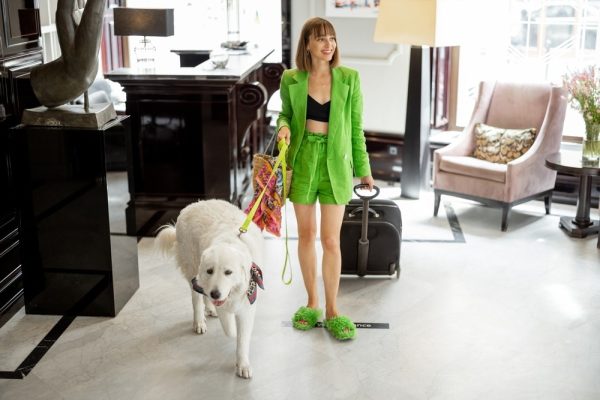In this article
View 3 More +People often confuse the Cane Corso with the giant English Mastiff since they’re both pretty big dogs. Both breeds are loyal, loving, and trainable. Why are they so similar? Well, the Cane Corso, also known as the Italian Mastiff, and the English Mastiff, sometimes simply referred to as the Mastiff, share a common ancestor and both belong to the Molossian breed group.
However, these breeds have some key differences that’ll matter if you’re choosing one as your new fur baby. While these two dog breeds are closely related, they have unique differences because they were bred for distinct purposes. If you’re contemplating whether to welcome a Cane Corso or a Mastiff into your family, it’s crucial to know their differences, especially when it comes to personality, temperament, and size.
In this article, we’ll look in more detail at Cane Corsos and Mastiffs to help you figure out which gentle giant suits you best!

Visual Differences
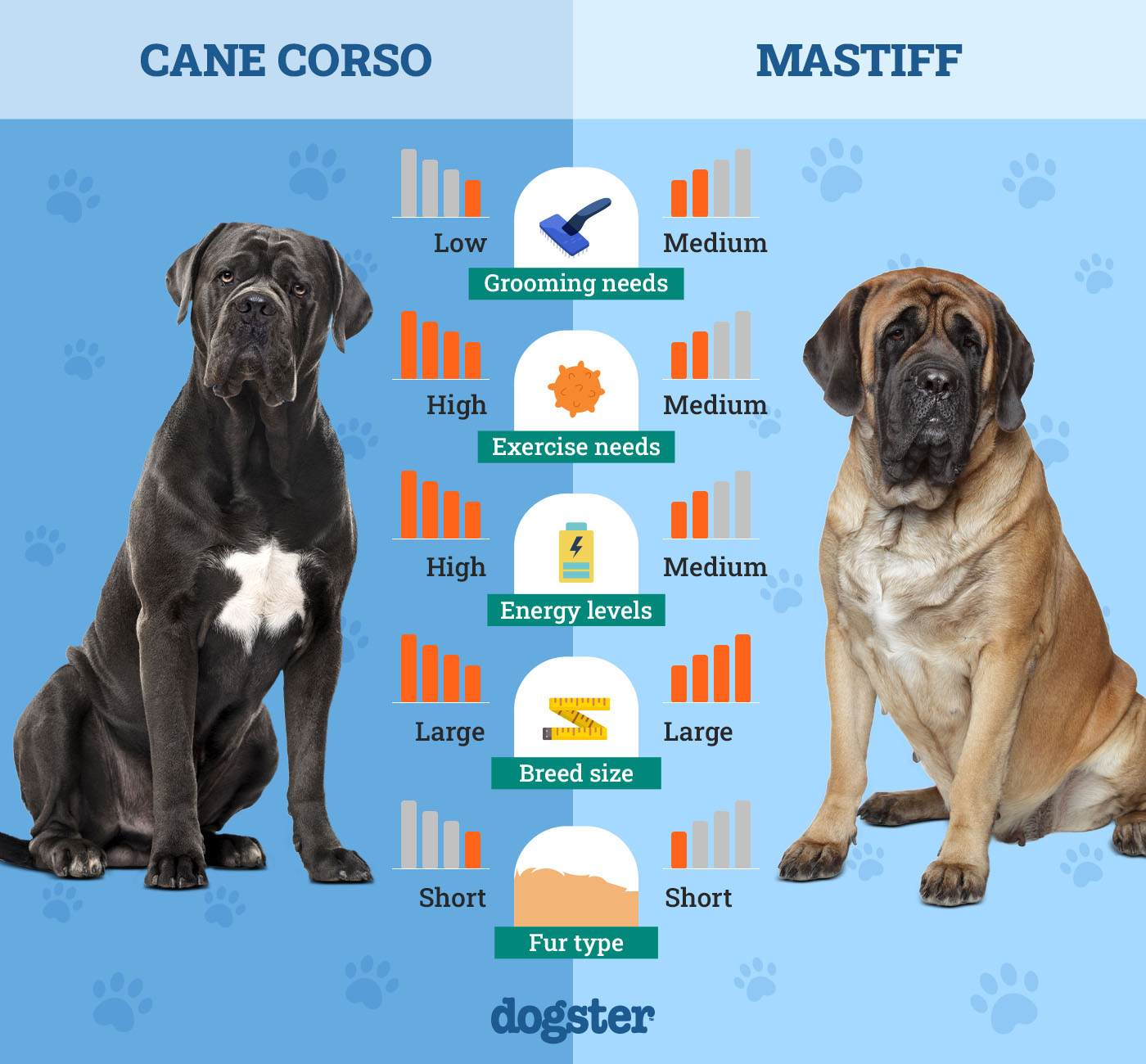
At a Glance
- Average height (adult): 24–28 inches
- Average weight (adult): 90–130 pounds
- Lifespan: 9–12 years
- Exercise: At least 1-2 hours per day
- Grooming needs: Low to moderate
- Family-friendly: Yes, with training
- Other pet-friendly: Often
- Trainability: Highly trainable, affectionate, energetic
- Average height (adult): 27–30 inches
- Average weight (adult): 120–230 pounds
- Lifespan: 6–10 years
- Exercise: At least 30 minutes to 1 hour per day
- Grooming needs: Low to moderate
- Family-friendly: Yes
- Other pet-friendly: Often
- Trainability: Responsive to gentle training, eager to please

Cane Corso Overview

The Cane Corso, aka Italian Mastiff, is a muscular, imposing dog often referred to as “the unmatched defender.” They might look fierce, but Cane Corsos are super affectionate and loyal to their family. These pooches come from the Molossus, a Mastiff-type dog, and their history goes all the way back to ancient Rome. Bred to guard, their name means “guardian dog” or “protector dog,” with “cane” meaning dog in Italian and “cohors” meaning protector in Latin. Cane Corsos can get a bad rap as being aggressive because of their appearance and history. But they’re also known for being loving and devoted to their family.
They’ve got a protective instinct, making them great guard dogs and, with some work, great with kiddos. Early socialization and training are key, so they’re better for experienced dog owners. Strong and intense, Cane Corsos are a solid choice for families wanting a loyal and protective companion.
Size
Cane Corsos and Mastiffs look pretty similar, but the most obvious difference is their size. Cane Corsos are big, standing 24 to 28 inches tall, but they’re smaller than Mastiffs when they’re full-grown. They also weigh around 90 to 130 pounds, which is way lighter than a Mastiff. A full-grown Cane Corso could be 50 to 100 pounds lighter than a grown Mastiff.
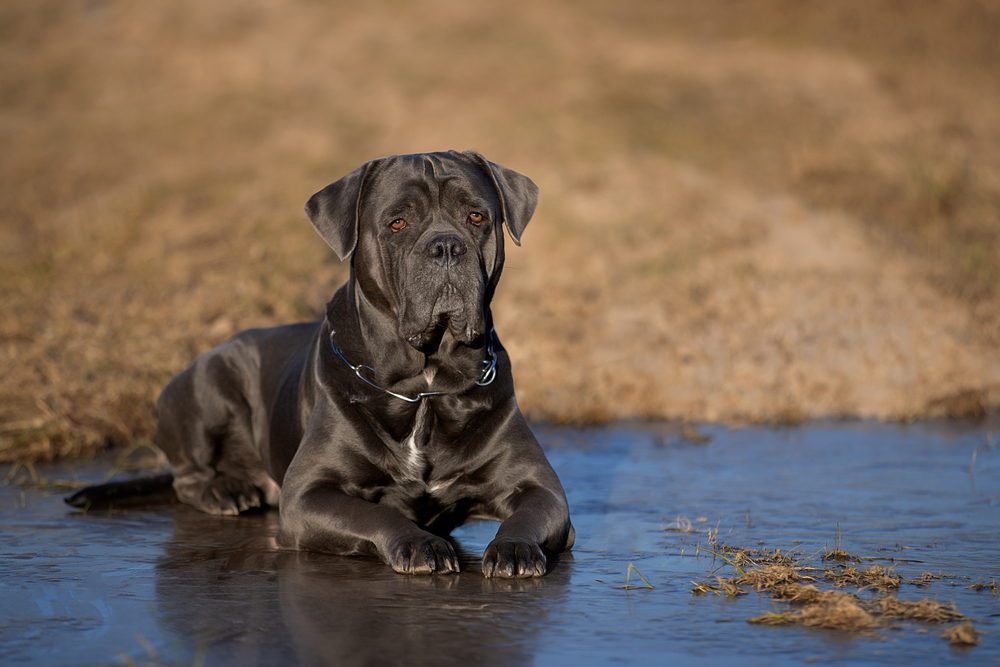
Coat and Color
Cane Corsos have a short, dense coat that is typically black, fawn, red, gray, or brindle. Their coat requires minimal grooming, with weekly brushing to reduce shedding. They also have tight, wrinkled foreheads and expressive eyes, which add to their overall appeal.
Temperament
Cane Corsos are intelligent and trainable dogs with strong protective instincts. They are devoted to their families and can be big softies. However, they are strong-willed and need firm training and socialization from an early age. Due to their natural instincts, they can be grouchy and may not get along with other dogs, particularly those of the same sex. If you teach them how to, they can learn to live with other pets.
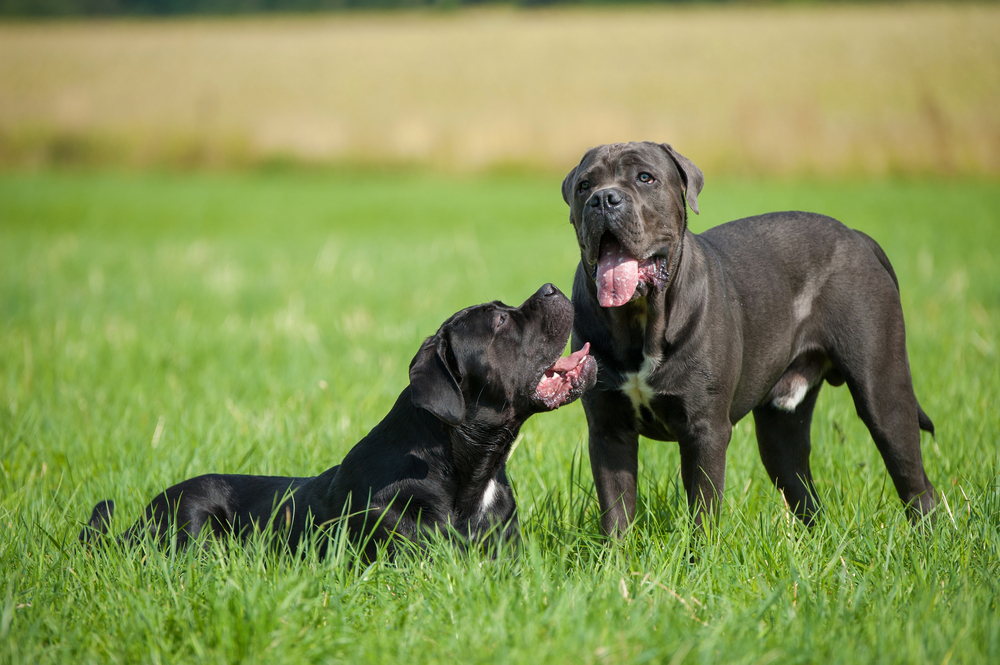
Training
Cane Corsos are intelligent and super eager to learn, but they can be a bit stubborn, so they need a confident and experienced leader. They are best trained with gentle guidance, positive reinforcement, and lots of encouragement. Make sure socialization is done early and often to ensure your Cane Corso is calm in all kinds of situations.
Obedience training should start the moment your fur baby arrives home. Puppy classes are an amazing way to bond with your Cane Corso and teach them the skills they need. As they grow up, advanced training classes or dog sports like agility, tracking, and protection work can keep their minds busy and reinforce good behavior.
Exercise
Cane Corsos are very active, so they need serious regular exercise to stay fit and well. A regular walk or, ideally, a jog, plus plenty of fun time in a securely gated and fenced yard, will help your Cane Corso both physically and mentally. As a working breed, they also slay in activities like agility, obedience, and tracking.
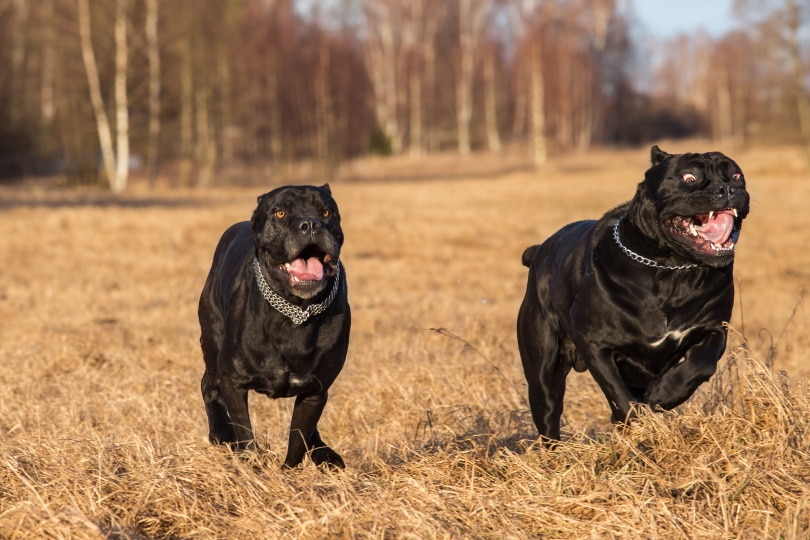
Health
Cane Corsos are usually pretty healthy dogs, but like all breeds, they can have their own set of issues. Watch out for bloat and gastric dilatation volvulus or GDV, orthopedic problems such as hip dysplasia and eye issues including entropion, ectropion, and third eyelid gland prolapse (cherry eye). Regular check-ups with your vet and preventative care can help catch and handle any problems early on.
Diet is also key for your Cane Corso’s health. Serve up a high-quality, balanced diet and keep an eye on their weight—obesity can make joint issues and other health problems worse.
Grooming
Cane Corsos are low-maintenance dogs when it comes to grooming. Their short, dense coat just needs a weekly brush with a rubber grooming mitt or a bristle brush to stay sleek and minimize shedding. Bathe them as needed, but don’t go overboard, or you’ll strip their skin of natural oils and cause skin issues.
Make sure your regular grooming includes checking and cleaning your Cane Corso’s ears (they can get ear infections). Trim their nails on the reg to avoid overgrowth and cracking and brush their teeth at least once a day to keep their pearly whites shining bright.
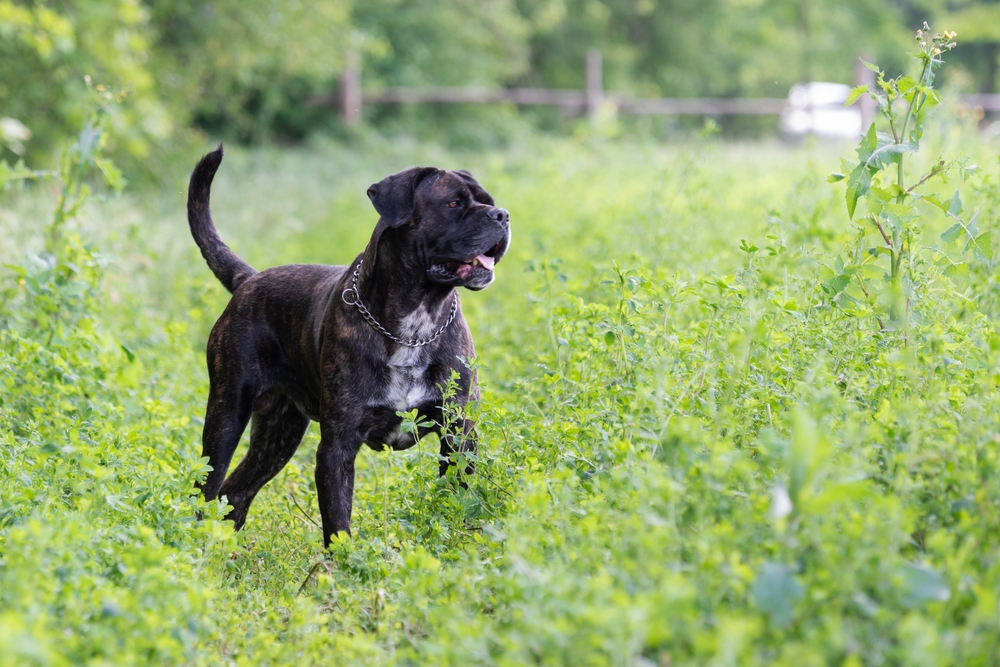
Suitable For:
Cane Corsos are like the ultimate bodyguards—strong, protective, and loyal. If you’re ready to put in the time for training and socializing, then a Cane Corso could be your perfect pal. Cane Corsos are ideal for experienced dog owners who know the ropes when it comes to handling strong-willed breeds. Active households are also ideal—Cane Corsos aren’t couch potatoes and they need their daily dose of exercise and mental stimulation. If your idea of fun is going on hikes, runs, or long walks, then a Cane Corso could be the paw-fect adventure buddy.
While they’re protective and loving, Cane Corsos are best suited for families with older children who know how to respect their space and boundaries. Cane Corsos thrive in homes with a yard or plenty of space to stretch their legs. Apartment living? Some people make it work—but overall, it’s best for them to have a large yard.

Mastiff Overview
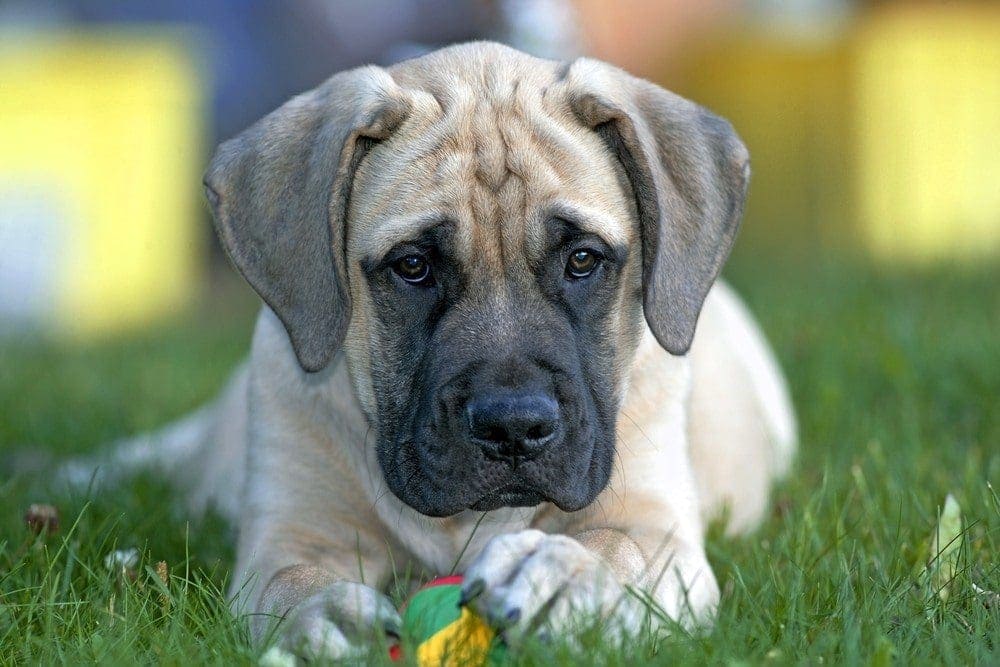
Mastiffs are massive, powerful dogs with a gentle temperament. Originally bred for guarding and protecting, they have a long history as loyal and devoted companions. Despite their size, Mastiffs are known as gentle giants, exhibiting patience and love toward their families.
Size
Mastiffs are one of the biggest dog breeds out there. They usually stand up to 27 inches tall, but they can weigh a whopping 230 pounds! Their massive size means they need loads of space to stretch out and do their thing, so apartment living is probably a no-go for these giant fur babies.
Coat and Color
Mastiffs have a short, dense coat that comes in various colors, including fawn, apricot, and brindle. They also have distinctive black masks on their faces. Mastiffs require minimal grooming, with weekly brushing to keep their shedding under control.
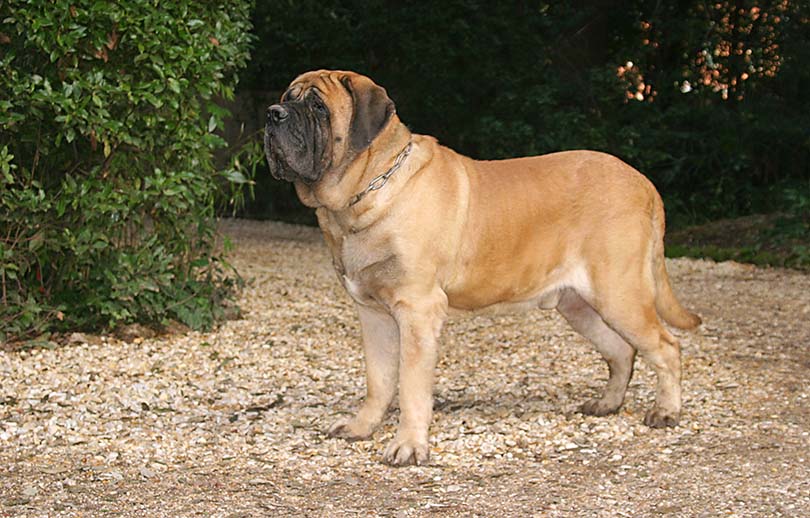
Temperament
Despite their intimidating size, Mastiffs are known for their gentle and loving temperament. They are loyal, protective, and patient, making them great family dogs. They get along well with children and other pets, but they still require early socialization and consistent training. They are eager to please, so they respond well to gentle, positive training methods.
Training
Mastiffs are eager to please their humans, which makes training them a breeze (well, as breezy as training a giant dog can be). But patience and consistency are the keys to success. Positive reinforcement is the way to go—avoid harsh training methods because these gentle giants have a sensitive side. Start socializing and training your Mastiff puppy as early as possible. It’ll help them grow up to be well-adjusted, confident, and well-behaved pooch.
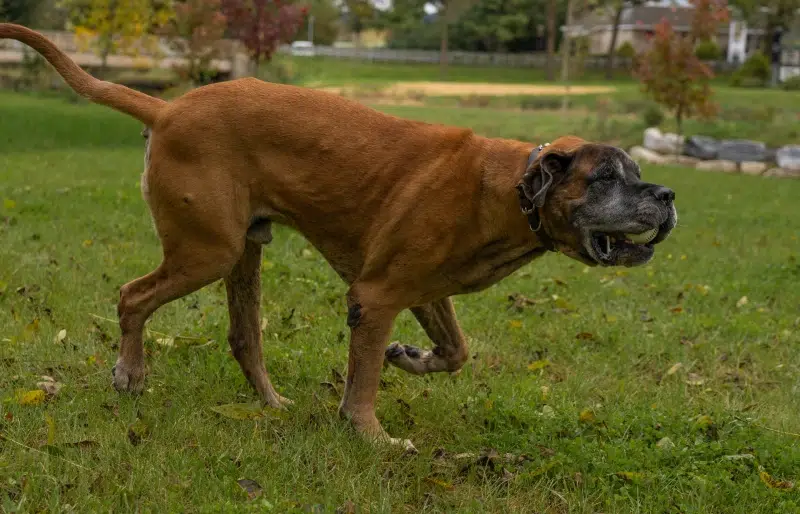
Exercise
Don’t let their size fool you—Mastiffs aren’t very high-energy dogs. A daily walk or two and some playtime in the backyard should do the trick. Just make sure to keep an eye on them in hot weather, as they’re prone to overheating.
Remember, even though they’re big ol’ cuties, they still need enough exercise to stay healthy and keep boredom at bay.
Health
Mastiffs are sturdy, but like all dogs, they’ve got their own set of potential health issues. They can be prone to hip and elbow dysplasia, heart problems, bloat and GDV, and putting on a few extra pounds. Regular vet check-ups are a must to keep your gentle giant living its best life. As for their lifespan, Mastiffs usually live for 6 to 10 years. But with the proper care, they can live long, happy lives.
Grooming
Mastiffs are low-maintenance when it comes to grooming. Their short, dense coat just needs a weekly brush to keep shedding under control.
Don’t forget about their dental hygiene—regular toothbrushing is a must to prevent dental issues. Nail trimming and ear cleaning should also be part of your Mastiff’s grooming routine.
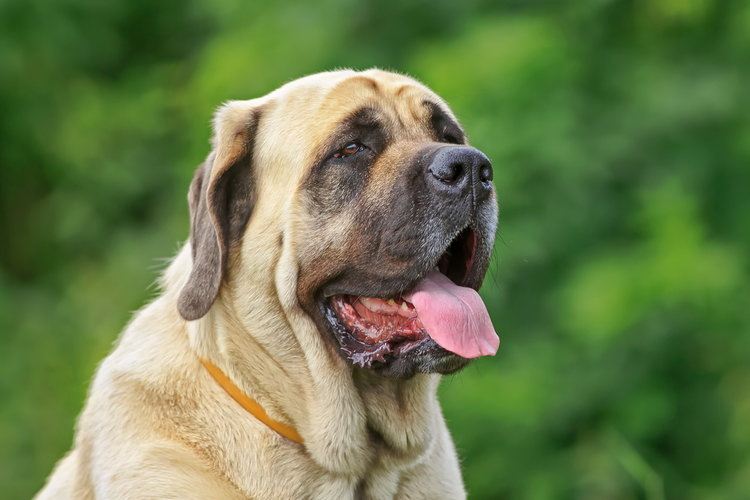
Suitable For:
Mastiffs are like giant teddy bears—big, cuddly, and oh-so-lovable. Mastiffs are relaxed and eager to please, making them a great choice for newbie dog parents. Just remember, training and socializing are still key to raising a well-mannered pup! Mastiffs are patient and gentle, which makes them great playmates for children of all ages, although they may accidentally knock over smaller children. Just make sure to teach your kids how to respect their four-legged friends. These gentle giants usually get along with other pets—as long as they’re properly introduced and socialized.
Mastiffs need room to accommodate their massive size, so a spacious home with a yard is ideal. Apartment living will be a tight squeeze for these colossal cuties.

Which Breed Is Right for You?

When deciding between a Cane Corso and a Mastiff, it’s essential to consider your lifestyle, living situation, and experience as a dog owner. Both breeds require ample space to accommodate their size, and they need consistent training and socialization.
Cane Corsos are more suited for experienced dog owners who can handle their strong-willed nature and provide the necessary training and socialization. Mastiffs, on the other hand, are gentle giants with a more laid-back temperament, making them a better choice for first-time dog owners or families with young children.
In the end, the decision comes down to personal preference and what suits your lifestyle best. Both breeds are affectionate, loyal, and protective, making them excellent additions to the right family.
See Also:
- Bullmastiff vs Cane Corso: Key Differences (With Pictures)
- Why Does Dog Food Smell Bad? Vet Approved Facts & FAQ
Featured Image Credit: Top – Eudyptula, Shutterstock | Bottom – Jagodka, Shutterstock
